Air admittance valves, also known as AAVs, are a crucial component of modern plumbing systems. They act as a safety device, allowing air to enter the drainage system while preventing sewer gases from entering buildings.
However, like any mechanical device, AAVs can experience problems. This article will explore some common issues that can arise with air admittance valves and discuss potential solutions.
Whether a homeowner or a plumbing professional, understanding the potential problems with AAVs can help you keep your plumbing system running smoothly.
What Causes Faulty Air Admittance Valve?
The causes of a problematic AAV can be numerous. However, the major reasons for having a defective air admittance valve include the following:
1. Physical Damage In The AAV
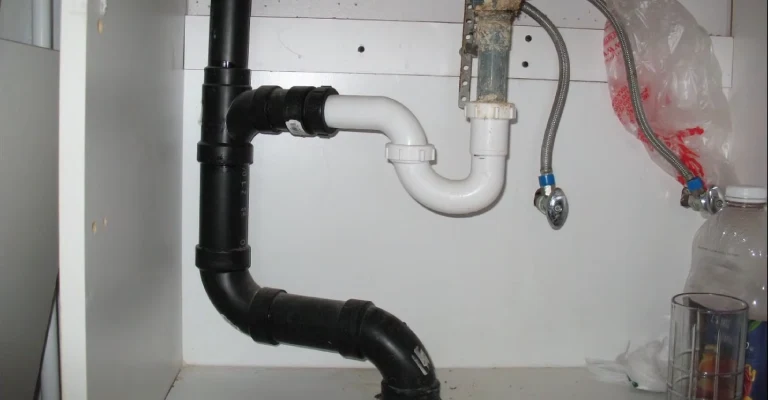
No matter how good your air admission valves are, if they’re physically damaged, they’ll have problems. It is possible for children or pets to accidentally damage the AAV by physically impacting it.
2. Faulty AAV Installation
It is sometimes the air admission valves themselves that are the root cause of the problem. You will receive proper sealants and washers installed by professional plumbers and sewage experts.
The installation will therefore be flawless if professionals do it. Installing the air admittance valves without prior experience will likely result in you installing them incorrectly.
In such a case, you may notice problems within months of installing your air admittance valves.
3. A Clogged Sewer
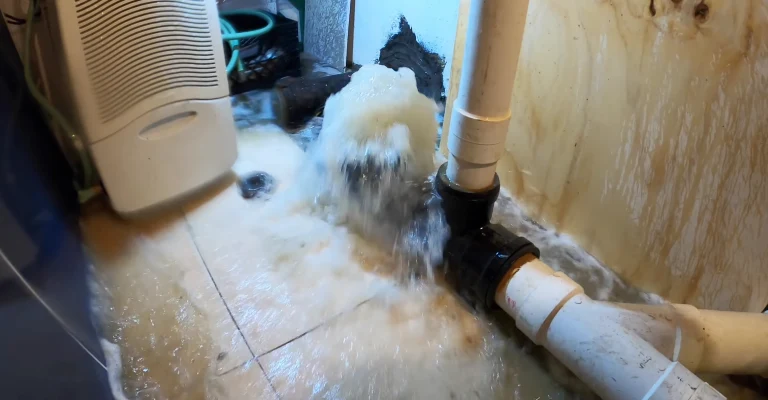
Whenever liquids or semi-liquid wastes are present, your sewage system should remove them.
Nevertheless, if you have any solid object clogging your drainage system, you will end up with clogged sewage. Consequently, the AAV will become under pressure.
As a result, if this positive pressure stays high for a long time, your air admittance valve (AAV) starts malfunctioning. The result will be bad odors throughout the house.
4. Using Air Admittance Valves For A Long Time
AAV manufacturers typically guarantee that their hardware will last for more than a decade. The truth is, however, quite the contrary.
You should replace your air admittance valve every ten years to maintain a problem-free sewage and plumbing system.
If your air admittance valve is older than 10 years, this might be causing it to malfunction.
5. Holes In The Air Admittance Valve
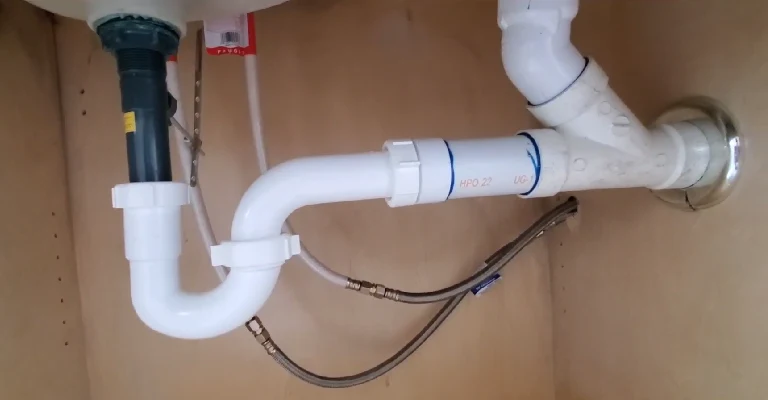
Water or air should never leak out of an air admittance valve. In other words, an air admittance valve cannot have a hole.
Rodents and mice can chew AAV and make holes in it, so if you have them in your house, you need to replace them.
The first sign that your plumbing system isn’t working as it once did will be the sudden change in how it operates. At that moment, you realize something is wrong with your air admittance valve.
Major Symptoms Of Faulty Air Admittance Valve
Identifying whether or not your AAV is indeed problematic in resolving AAV issues is important. Following are the symptoms you should look for to do this:
1. Air Admittance Valve Leaking Water
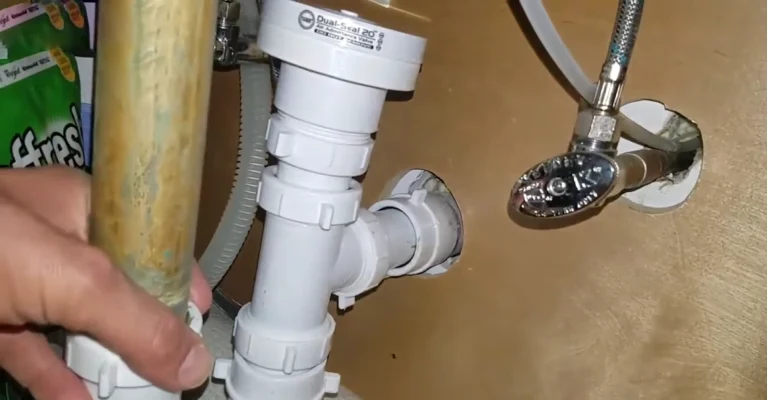
The purpose of air admittance valves is to permit air entry into a plumbing system without allowing the air to escape. There shouldn’t be any leaks coming out of the AAV (not even air).
The air admittance valve is 100% sure to be faulty if it leaks water whenever it is activated.
2. Presence Of Sewer Gas In The Building Atmosphere
Sewer gas must be expelled into the outdoor atmosphere through air valves in the sewage system.
If your air admittance valve malfunctions, sewer gas will be released from your toilets and sinks. Additionally, sewer gas will accumulate in your home’s atmosphere, making it difficult for you to breathe.
3. Wastewater Coming Out Of Sinks And Toilets
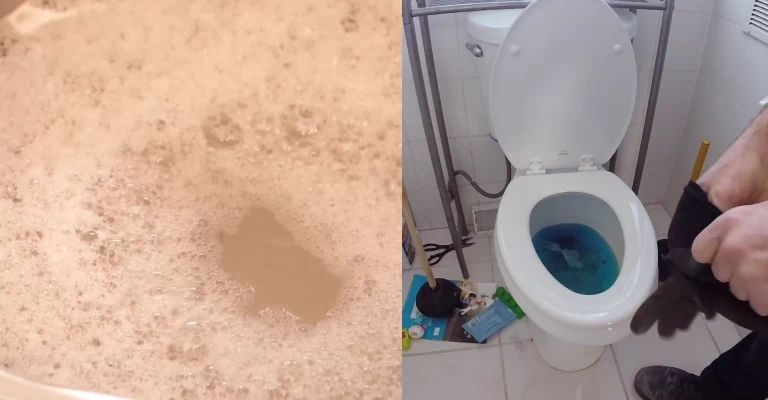
Sinks and toilets are used throughout our house to dispose of waste and wastewater underground.
A malfunctioning air admittance valve, however, may cause wastewater to release from your sinks and toilets.
4. Strong And Frequent Air Admittance Valve Noises
There should always be silence in a house’s plumbing system. Water outlets and toilets may make frequent, loud gurgling sounds if your plumbing system has a problematic AAV.
If you hear gurgling sounds from your sewage pipelines and outlets, your airflow is somehow being disrupted. AAV replacement is usually the solution to this problem.
5. Unwanted Odors And Smell In The Home Atmosphere

If your AAV is problematic, you will notice a stinky smell throughout your home as the first and most obvious symptom.
When your AAV malfunctions, your plumbing system’s airflow is disrupted; therefore, your sewage will release stinky air into your home’s atmosphere.
Air Admittance Valve Problems And Solutions
The air admittance valve is such hardware that requires immediate repair if it malfunctions. In other words, you’ll end up with an unpleasant and stinky smell all over the house.
The following is a list of the most common problems with your AAV. Moreover, I have given solutions to these problems as well.
1. Air Admittance Valve Smells: Stinky Odors In The House:
The steps below will help you replace your air admittance valve if you determine it’s causing a bad smell in your house’s atmosphere.
Replace an old air admittance valve with a new one if your air admittance valve is problematic.
Solution:
Changing the AAV should not be approached if you have no experience replacing pipes or plumbing parts. Rather than doing the work yourself, I recommend you contact a professional plumber.
Ensure replacing the AAV is done neatly to maintain a healthy home environment. In this case, you should contact your local plumber.
For a replacement of your existing AAV, follow these steps if you know how to change plumbing hardware:
- Turn Off The Water Supply In Your Plumbing System
As a first step, you should turn off the water supply valves at the outlet where the AAV will be placed. Doing so will ensure your house is not flooded with water as you disassemble the existing AAV.
- Remove The Air Admittance Valve From The Sanitary T Connection
Generally, AAVs are installed on a sanitary T connection, including the AAV adapter valve. It is, therefore, necessary to unthread and detach the old AAV from the adapter valve before installing the new AAV.
- Attach Teflon Tape To The AAV Threads
It is necessary to attach Teflon tape to the threads of the AAV before its installation, just like any other sanitary hardware. By using Teflon tape, you can prevent air and water from escaping from the AAV’s threads.
- Thread The New AAV Into The Adapter Valve
After applying Teflon tape to the AAV threads, you can use your hand to thread the AAV into the adapter valve. Please keep in mind that threading should be done clockwise.
It’s important to avoid over-threading the AAV at this step. The reason is that rapturing the threads of the AAV is caused by threading it too tightly.
Therefore, you might need to purchase a new AAV. You should therefore take caution when threading the AAV into its adapter valve.
2. Bad Odors Even After Changing The AAV
Despite replacing the old air admittance valve in your home, you may still experience a bad smell in your home’s atmosphere. This may indicate that your plumbing and sewage systems are at fault.
Solution:
It is only possible to solve this problem by hiring a professional plumber to inspect your entire plumbing system. You can also ask your plumber to move the air admittance valve if you would like.
The height of the air admittance valves relative to the water outlets (sinks, toilets, etc.) can be set incorrectly. Without the AAV installed at the correct height, you will continuously experience problematic behavior with the AAV.
When installing the air admittance valve, it should be located 3 feet above the water supply outlet. It makes sense to tell your plumber to move the AAV three feet above your water outlets so that it is at least three feet above the ground.
3. Sewer Gas Leakage Even After Changing The AAV
It has already been noted that your air admittance valves will generally be installed on an adapter valve. Adapters will have sanitary T connectors attached to them.
A physically damaged sanitary T connector will result in air or water leaks throughout the connector. Therefore, using the solution below, you need to change the T connector as soon as possible.
Solution:
When you change the T connector, you should be just as careful as when you change the air admission valve. In case you do not have experience replacing plumbing parts, you should hire a professional to do the job.
Following are the steps you can follow to change the sanitary T connector if you want to do it yourself:
- Turn Off The Water Supply Valve
Turning off the water supply valve is always the first thing you should do before replacing any plumbing part. Having the old T connector uninstalled first will prevent you from getting hit by the water gushing out of the pipelines.
- Unthread The Valves That Are Securing The T Connector
There are three T-connector openings: the AAV goes in one opening, the water outlet (like a sink) goes in another, and the water supply line goes in another.
After that, you need to unthread the T connector from the water supply line. Your water outlet line can then be unplugged by unthreading the T connector. As a last step, you should also unthread the T connector from the air admittance valve.
- Apply Teflon Tapes On The New T Connector
As part of this step, you will cover the threadings of the new T connector with Teflon tape. It is important to apply Teflon tape to the T connector to ensure that it is tightly connected to the plumbing system. Therefore, the threadings cannot leak water.
- Thread The T Connector To The Plumbing System
It’s time to thread the new T connector into the plumbing system, just as you dismantled the old one.
There are three openings on the water supply line: one for the AAV, another for the water outlet connector, and the third for the water supply line.
How To Tell If Air Admittance Valve Is Working?
In a vessel with an air admittance valve, airflow into or out of the vessel while keeping a seal in place. Typically, this is used to maintain a vessel’s internal pressure.
You likely don’t know what an air admittance valve is if you’re like most people. An air admittance valve could cause a clogged drain if you’ve ever had a plumber come to your house for it.
You can figure out whether an air admission valve is working by doing the following:
- First of all, notice if there is a hissing noise coming from the valve. No sound comes from the valve, so it needs to be replaced if you cannot hear it.
- In the case of a non-working valve with no water or air coming out of it, the valve may be clogged and must be replaced. If you want to test the valve, you will need to remove it from the wall and try to open and close it.
- You should be able to open and close the valve easily if it functions. A stuck or frozen valve may cause it to not work. It is necessary to remove the valve from the wall and open and close it to test it.
- No water should leak from the valve if it does not work. It is necessary to shut off and shut on the valve several times before you can test it. The seal on the valve likely needs to be replaced if it starts working after being turned off and on repeatedly.
Do Air Admittance Valves Need Maintenance?
A definitive answer to this question cannot be given since it depends on the type of valve used and how often it is used.
Cleaning and inspecting air admittance valves regularly is generally necessary to ensure they are functioning as intended.
Water traps that are not separately vented and include air admittance valves can cause problems.
It could result in back pressure in the pipework when appliances are discharged, affecting their discharge – especially when flushing toilets.
No need to maintain air admission valves, but sewer gas can enter buildings if faulty.
What Happens When An Air Admittance Valve Fails?
Carbon dioxide, dust, or other foreign substances clog air admittance valves, causing them to fail.
Various problems can be associated with failing to bring air back into the pipes. The system will likely experience an increase in pressure, resulting in water boiling.
Whenever pipes are exposed, boils will form, and the water will rise. Eventually, water would burst through the air admittance valve and flood the building if it reached a sufficiently high level.
When Should An AAV Be Replaced?
It is generally suggested to change air admittance valves after 500,000 cycles of use. The manufacturer of air admittance valves states that a single valve should last up to 30 years.
An AAV only sometimes lasts for as long as 30 years in practice. In most cases of household air admittance valves, a replacement will be necessary after about 10 years.
Commercial buildings with plumbing systems (like banks, hospitals, subway stations, etc.) should replace air admittance valves every five years if used in their plumbing systems.
As well as that, every month, you should inspect and check your plumbing system’s air admittance valves. Preventing any problem from arising with your air admittance valves is made easier this way.
Final Words
The final conclusion of this discussion is that air admittance valves may cause problems for various reasons. It is, however, necessary to replace the air admittance valve with a newer one to resolve all of these problems.
If you suspect the problem is with another part of the plumbing system, you should consult a professional plumber. Furthermore, you should always perform routine checks on your air admittance valves to avoid severe problems.
Most problems you will encounter with an air admittance valve are minor. In many cases, you will be pleasantly surprised to find that they are great tools for clearing clogs and odors.
You should call a professional if you encounter problems and don’t know how to fix them; they will diagnose and solve them quickly and safely.







